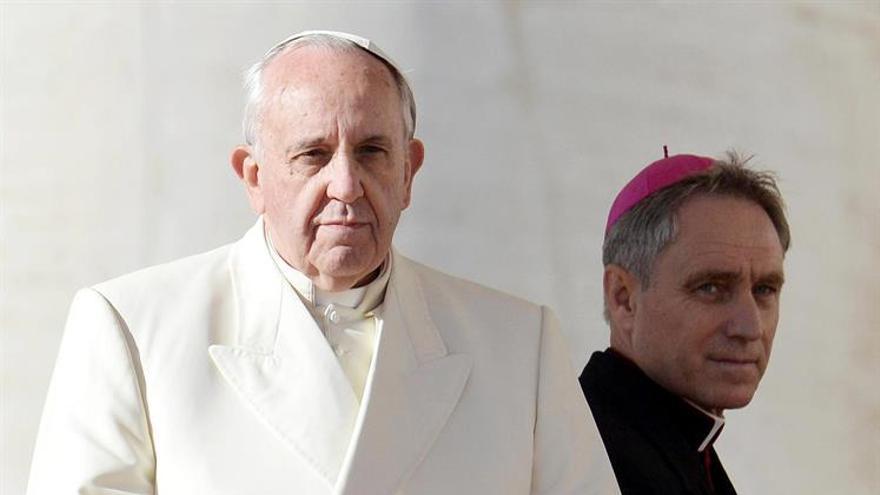(ZENIT News / Rome, 10.01.2023).- A day after Benedict XVI’s death the press learned that the private secretary of the Pope Emeritus and non-acting Prefect of the Papal Household, Monsignor Georg Gänswein, would publish a book in the genre of a memoir.
In as much as was anticipated on January 1, 2023, the memoirs were related in good measure to a part of the author’s life: that part spent, in fact, with the deceased Pontiff. In the mind of not a few people a question arose: how was it possible to have a book of that kind ready in such a short time? It seemed evident that it was a work that was already prepared and was awaiting the right moment for publication. And what better context than the death of the one of whom those memoirs of the author are related. A fact certainly did not go unnoticed: it was not Monsignor Gänswein who anticipated the news of the book. And, so far as is known, neither was it Monsignor who gave the text ahead of time to Vatican experts and the press that cover information on the Church.
Thus it was that, in a few days (practically one week without taking into consideration that Benedict XVI was not yet buried), the headlines that were placed as the second relevant news, just after the Pope Emeritus’ death, transmitted a conflict between Archbishop Gänswein and Pope Francis and, stemming from them, between two supposed factions in the Catholic Church: those of the “traditionalists” and of the “progressives.” The reasons for it, according to the sides highlighted by the press, were more than sufficient.
In fact, in “Nient’altro che la veritá. La mia vita al fianco di Benedetto XVI” [“Nothing But The Truth – My Life Beside Benedict XVI”], Piemme Mondadori, Milan, 2023), reconstructs passages that end by reflecting a certain tension between Archbishop Gänswein and Pope Francis. Of the book’s nine chapters, it’s especially in chapter 8 (“The Relationship between the Two Popes”) in which passages are read that manifest a distancing between these two last characters.
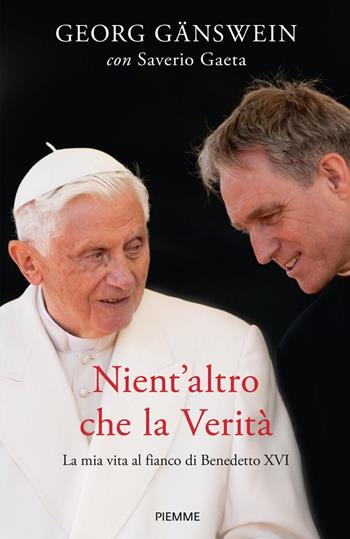
Chapter 8 begins by recounting the beginnings of the exchanges between the newly elected Francis and the Pope Emeritus: from the eventual call that the former placed to the latter to greet him, no sooner he was elected, to the endearing visit that Francis made later to Benedict in the Mater Ecclesiae Monastery. In the meantime, Gänswein acknowledges that, in the context of that Conclave, in the Pope Emeritus’ mind the Archbishop of Buenos Aires did not figure as a candidate, but rather the Cardinals Angelo Scola, Odilo Pedro Scherer and Marc Ouellet (p. 234). He points out that occasions of meeting between Benedict XVI and the then Archbishop of Buenos Aires had not been many, in part due to the distance. And it is in that context that there is talk of a consultation of Cardinal Bergoglio about a commission to the Society of Jesus:
“A meaningful relationship had taken place between them [Benedict XVI and the then Archbishop of Buenos Aires] in 2007, when the Superior General of the Jesuits, Father Peter Hans Kolvenbach, who had informed Benedict that he wanted to resign at the age of 80 in 2008, keeping the title of Superior General Emeritus, and began to prepare the Congregation that would elect his successor. Through a letter sent to Cardinal Bertone, Pope Francis made some requests, especially in regard to the spiritual and ecclesial preparation of young Jesuits, as well as the value and observance of the fourth vow, that of “special obedience to the Pontiff.” The Secretariat of State then suggested to Father Kolvenbach to involve the Jesuit Cardinal Bergoglio in the preparatory works, asking him for his opinion on the state of the Society of Jesus and on the hypothesis of a commission that, arose again every now and then. Kolvenbach’s successor, Father Adolfo Nicolás, would say that on March 17, 2013, in his first meeting with Pope Francis, he heard from his own lips, the confidence that he had tenaciously opposed this idea, implicating Kolvenbach himself and asking him to communicate to Benedict XVI, also in his name, the inconvenience of proceeding in this problematic direction, obtaining his promise that this would not happen” (p. 235).
On page 240 Gänswein begins to recount the visits and books that seem to be the beginning of problems for him: that of Vittorio Messori (p. 240-241), then Dario Edoardo Viganò (p. 284-287) and Cardinal Sarah’s book on celibacy, a “co-authored” book presented, to which he dedicates no less than 12 pages (from p. 250 to p. 262). The chapter closes with the section of chapter 8 on which the press has focused: “Il Prefetto Dimezzato” (The Prefect Reduced by Half”).
According to Gänswein, “when I got my quinquennial confirmation at the end of 2017, [Pope Francis] wished to keep me in the post essentially out of respect for the appointment made by Benedict, although from the beginning it happened ever more frequently that I was ignored. In my responsibilities, given that Pope Francis preferred instead to manage things directly with my deputy, Regent Father Leonardo Sapienza” (p. 263). He gives as example the absence the Pope asked of him, when on June 15, 2014, he did not accompany him on his visit to Sant’Egidio Community in Trastevere, and the call he received afterwards from Andrea Riccardi asking him if he or Benedict had a problem with the Community. “In so far as it was possible for me, I communicated to Pope Francis the content of that telephone call and I explained to him that all this made problematic the running of the office and undermined my authority and that, at the personal level, I felt very humiliated for his not having clarified to me the reason for his decision as well as his having talked <about it> in the presence of other people, so that gossip spread immediately in the Vatican, with varying interpretations. He answered me that I was right and that he was not aware of the matter; he apologized but then added that humiliation does one much good… ” (p. 263).
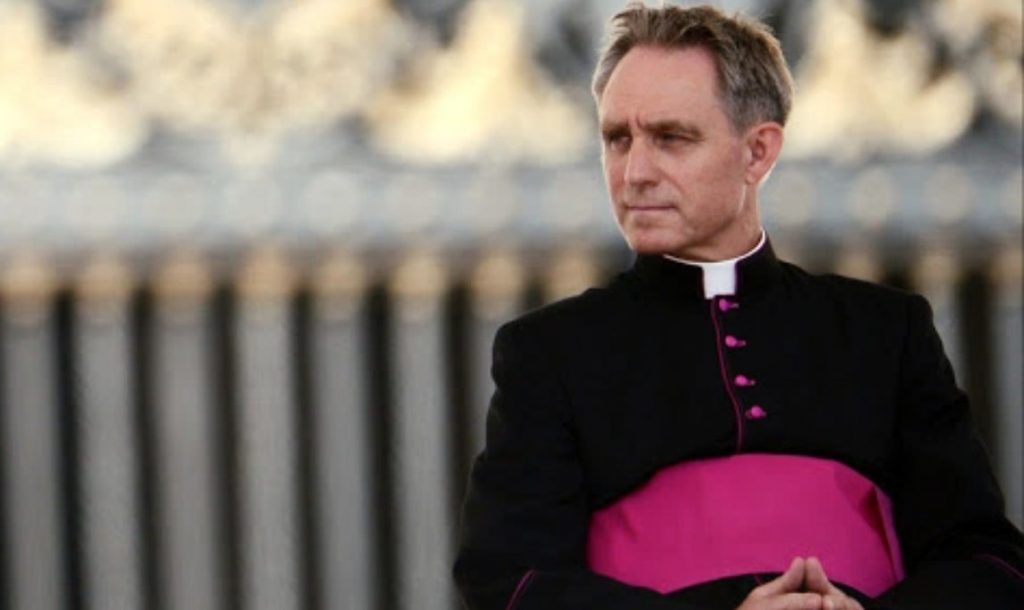
Another tension mentioned by Gänswein regards the apartment that, in virtue of the assigned mission, corresponded to the Prefect of the Papal Household. That apartment was in the old wing of the Apostolic Palace. “On the morning of July 22, 21016, I was waiting as usual for Pope Francis in Saint Damasus, where one takes the Noble elevator. He got down from the car and said to me immediately: “I’ve heard that you have the apartment in the Apostolici Palace.” I specified that it was the apartment of the Prefect of the Papal Household, which was assigned to me temporarily for reasons of the office. “Please, don’t take possession of it now,” he added. When I informed him that it was normal for the Prefect to reside there, to carry out his functions [. . . ] he answered me: ‘Wait, I must first speak with my closest collaborators; don’t do anything until you receive my answer.’ This upset me because I intuited that there was someone behind who was maneuvering to take possession of that apartment. On September 2 the Pope gave the Archbishop a more definitive answer:
“He was waiting for my answer and now I told him to let things be. When you need an apartment I will take charge of it.’ In face of my expression of great astonishment, he explained to me that it had been pointed out to him that the Secretary of State (Cardinal Pietro Parolin) and the Deputy of the First Section for General Affairs (the then Archbishop Giovanni Angelo Becciu) lived there but not the Secretary of the Second Section for Relations with States. He concluded firmly: “I have decided it,” and, in fact, sometime later, I saw that Archbishop Paul Richard Gallagher had moved effectively to that apartment” (p. 265).
It was at the end of January of 2020 when in the course of an audience requested by Gänswein to Pope Francis (to explain the case of Cardinal Sarah’s book), Francis asked him to stay with Benedict XVI: “Henceforth stay at home. Accompany Benedict, who needs you, and be a shield for him.” I was stupefied and speechless. When I tried to answer him, that I had already been doing this for seven years, and that I could continue to do so in the future, the conversation ended abruptly: “You continue being Prefect but from tomorrow don’t come back to work. I answered him, resigned: “I can’t understand it, I don’t accept it humanly [speaking], but I comply only out of obedience. And, in response he said: ‘That’s a good word. I know so because in my personal experience to ‘accept obeying’ is something good.”
A few weeks later, in view of the fact that the press had noticed the inexplicable absence of Monsignor Georg, a notification was issued by the Holy See Press Office: “Monsignor Gänswein’s absence during some audiences of the last weeks , is due to an ordinary redistribution of the different commitments and functions of the Prefect of the Papal Household, who also exercises the role of private secretary to the Pope Emeritus” (p. 267).
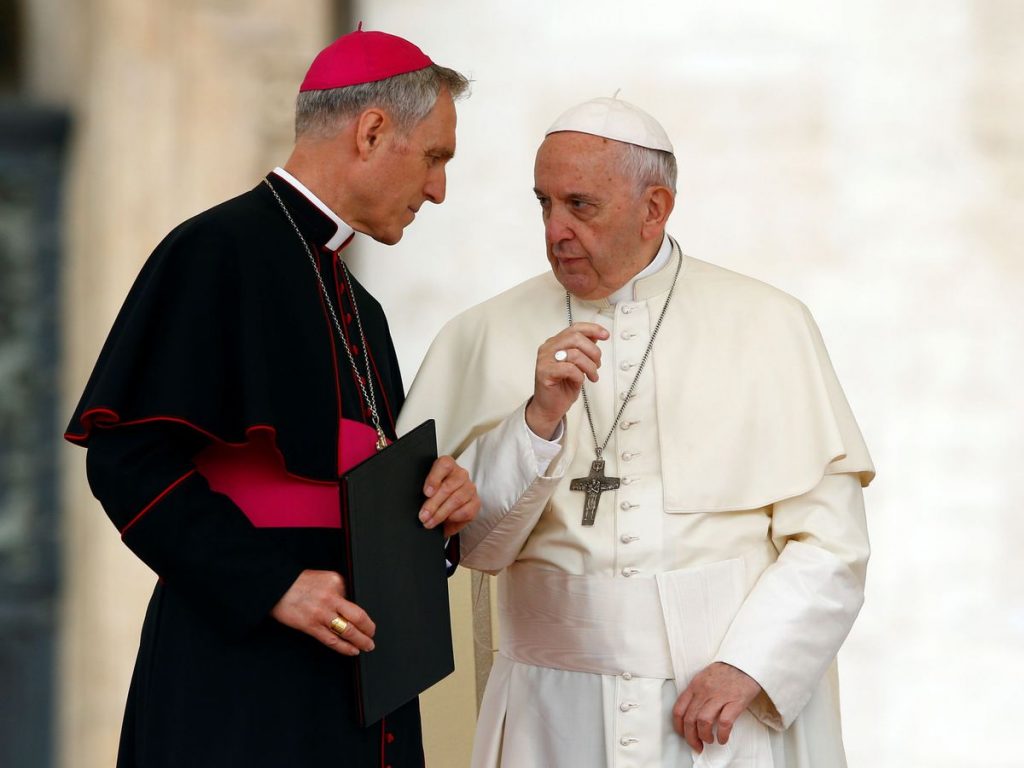
These passages certainly reflect a relationship between two private persons to which public sensibility is not used to. What we revealed earlier responds to our unwillingness to fail to address those aspects of tension. However, it would be dishonest to concentrate only on them.
As was said, there are nine other chapters that address many other subjects, more often endearing and lovely, which not only reflect the spiritual, moral and academic stature of Benedict XVI but also the cordial relations between him and Pope Francis. To give an example, there is talk of the clarity with which Benedict defended the fact — for some not always obvious — that Francis was and is the only reigning Pope. Another example is that, on his return from Castel Gandolfo after his renunciation, Francis received Benedict in the Vatican, Monsignor Georg says. “A few weeks later, the Pope Emeritus was astonished by the surprise he received on his return to the Vatican by helicopter from Castel Gandolfo on May 2. Without our knowing it, Pope Francis was waiting for us at the main door of the monastery. That improvisation opened Benedict’s heart wide with joy, feeling himself fully welcomed in Peter’s enclosure,” in that unprecedented situation of his. Francis himself stressed it on June 28, 2016, in his address during the commemoration of the 65th anniversary of his priestly Ordination, with words profoundly permeated with warmth and esteem: “‘Thanks especially to you, Holy Father!” Your kindness from the first moment of my election, in each moment of my life here, really moves me interiorly. More than the Vatican Gardens with their beauty, your kindness is the place where I live: I feel protected.’”
But that is not all. Gänswein says that “we had him twice as a guest in “Mater Ecclesiae” to dine and Benedict and I went once to Santa Marta.” And he adds: “Pope Bergoglio used to bring wine as a gift and a pot of dulce de leche, Argentina’s tasty dairy cream jam. Probably the idea of wine stemmed from the fact that once he asked me what Benedict liked to eat and I answered him ‘Sweets,” so he must have referred mentally to that homonym. Benedict corresponded with limoncello made by the Memores from the lemons of our garden and with typical Bavarian sweets, for example the Christmas Lebkuchen biscuits.
That there is exaggerated attention paid to human questions regarding differences of opinions is understandable in as much as they arouse more attention and fuel controversy. They also induce to purchase the book. It’s obvious that there are relationships and exchanges that Monsignor Gänswein has more at heart. It’s no less true that this book enables one to learn about events from the perspective of the one recounting them and, in order to draw broader assessments, one should also know the version of the other side, so that not only the vision is more complete but the conclusions are better.
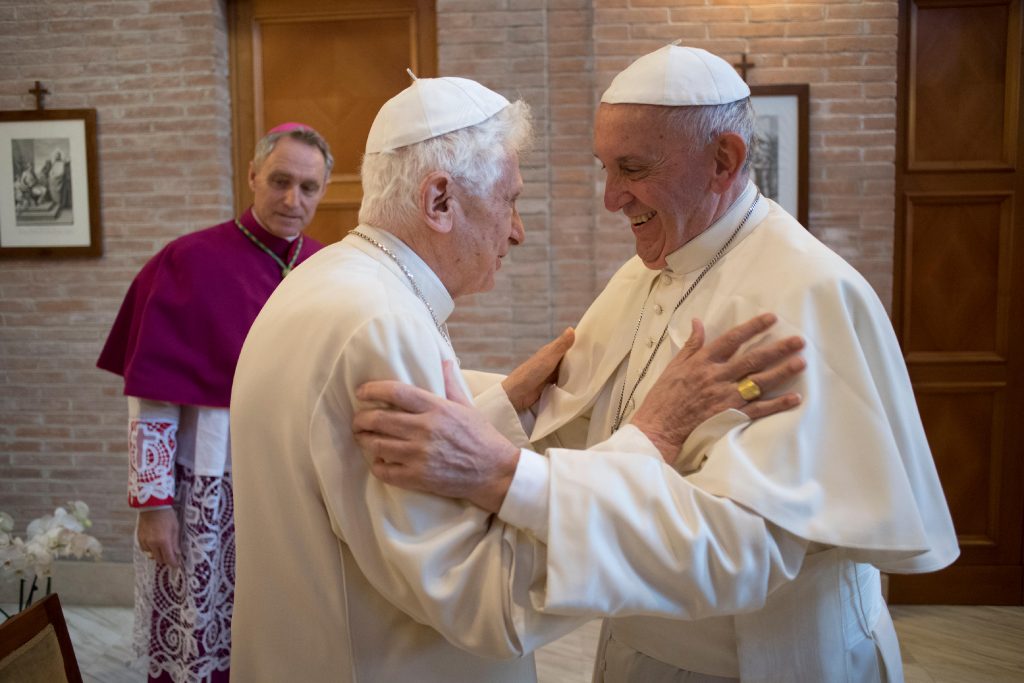
As mentioned at the beginning, the book was a work prepared while waiting for its timely publication. It’s known that Benedict XVI knew about the book and that it seems that he asked that it be published after his death. This also makes the marketing endeavour more comprehensible, — on the part of the Publishers? — which has affected not only the image of Pope Francis but also that of Gänswein. It is marketing geared to get good sales rather than respecting the author’s intention. “These pages contain a personal testimony of the grandeur of a peaceable man, an excellent erudite, a Cardinal and a Pope who made history in our time and who should be remembered as a beacon of theological competence, doctrinal clarity and prophetic wisdom. But they are also a first-hand account that attempts to cast light on some misunderstood aspects of his Pontificate and describe the real “Vatican world” from within” (p.6). The fact that, taking advantage of all this context there are those that in addition have sought to use as a flag one or the other protagonist to claim their own ideological positions makes one note that we are before two victims of an inflated conflict.
It was midday on Monday, January 9, 2023, when the Holy See Press Office published Pope Francis’ only private audience. The person received in audience was Monsignor Georg Gänswein. Three days were left before the publication of the book. Nine days had passed since it was announced. That the book was one of the subjects addressed is more than certain. That another subject was the future of Gänswein himself, can also be taken for granted. That the environment itself of a personal meeting gave each them the possibility to explain themselves better and to understand themselves more, is more than comprehensible. Naturally, that doesn’t fuel the conflict.


